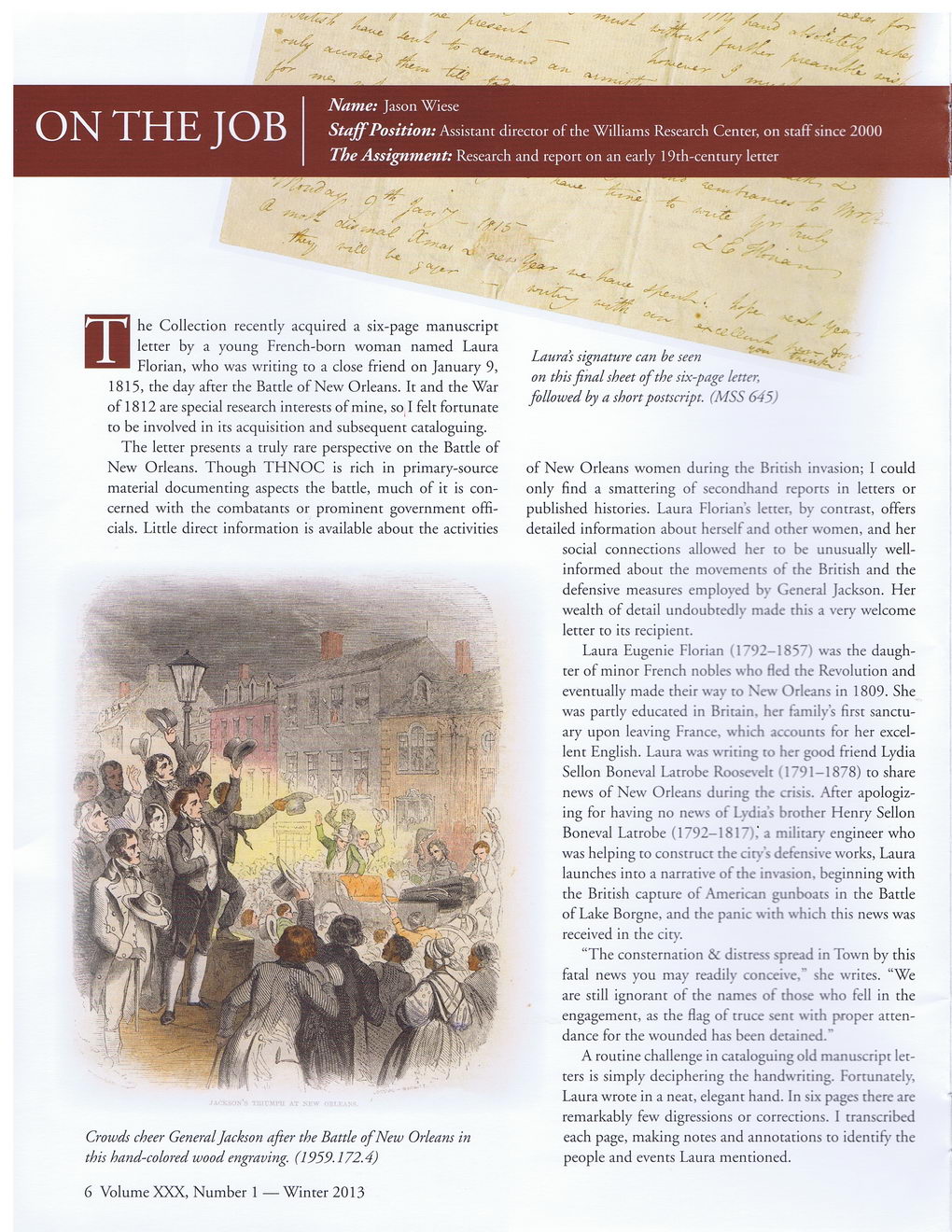This text was obtained via automated optical character recognition.
It has not been edited and may therefore contain several errors.
) ^ __ Name: Jason Wiese J_ | P, I [j Staff Position: Assistant director of the Williams Research Center, on staff since 2000 The Assignment: Research and report on an early 19th-century letter & ~e ?ie., T he Collection recently acquired a six-page manuscript letter by a young French-born woman named Laura Florian, who was writing to a close friend on January 9, 1815, the day after the Battle of New Orleans. It and the War of 1812 are special research interests of mine, so I felt fortunate to be involved in its acquisition and subsequent cataloguing. The letter presents a truly rare perspective on the Battle of New Orleans. Though THNOC is rich in primary-source material documenting aspects the battle, much of it is concerned with the combatants or prominent government officials. Little direct information is available about the activities Crowds cheer General Jackson after the Battle of New Orleans in this hand-colored wood engraving. (1959.172.4) e-. Laura’s signature can be seen on this final sheet of the six-page letter, followed by a short postscript. (MSS 645) of New Orleans women during the British invasion; I could only find a smattering of secondhand reports in letters or published histories. Laura Florians letter, by contrast, offers detailed information about herself and other women, and her social connections allowed her to be unusually well-informed about the movements of the British and the defensive measures employed by General Jackson. Her wealth of detail undoubtedly made this a very welcome letter to its recipient. Laura Eugenie Florian (1792-1857) was the daughter of minor French nobles who fled the Revolution and eventually made their way to New Orleans in 1809. She was partly educated in Britain, her family’s first sanctuary upon leaving France, which accounts for her excellent English. Laura was writing to her good friend Lydia Sellon Boneval Latrobe Roosevelt 1791-1878) to share news of New Orleans during the crisis. After apologizing for having no news of Lydia’s brother Henry Sellon Boneval Latrobe (1792-1817i,' a military engineer who was helping to construct the city's defensive works, Laura launches into a narrative of the invasion, beginning with the British capture of American gunboats in the Battle of Lake Borgne, and the panic with which this news was received in the city. “The consternation & distress spread in Town by this fatal news you may readily conceive,” she writes. “We are still ignorant of the names of those who fell in the engagement, as the flag of truce sent with proper attendance for the wounded has been detained." A routine challenge in cataloguing old manuscript letters is simply deciphering the handwriting. Fortunately, Laura wrote in a neat, elegant hand. In six pages there are remarkably few digressions or corrections. I transcribed each page, making notes and annotations to identify the people and events Laura mentioned. 6 Volume XXX, Number 1 — Winter 2013

New Orleans Quarterly 2013 Winter (06)